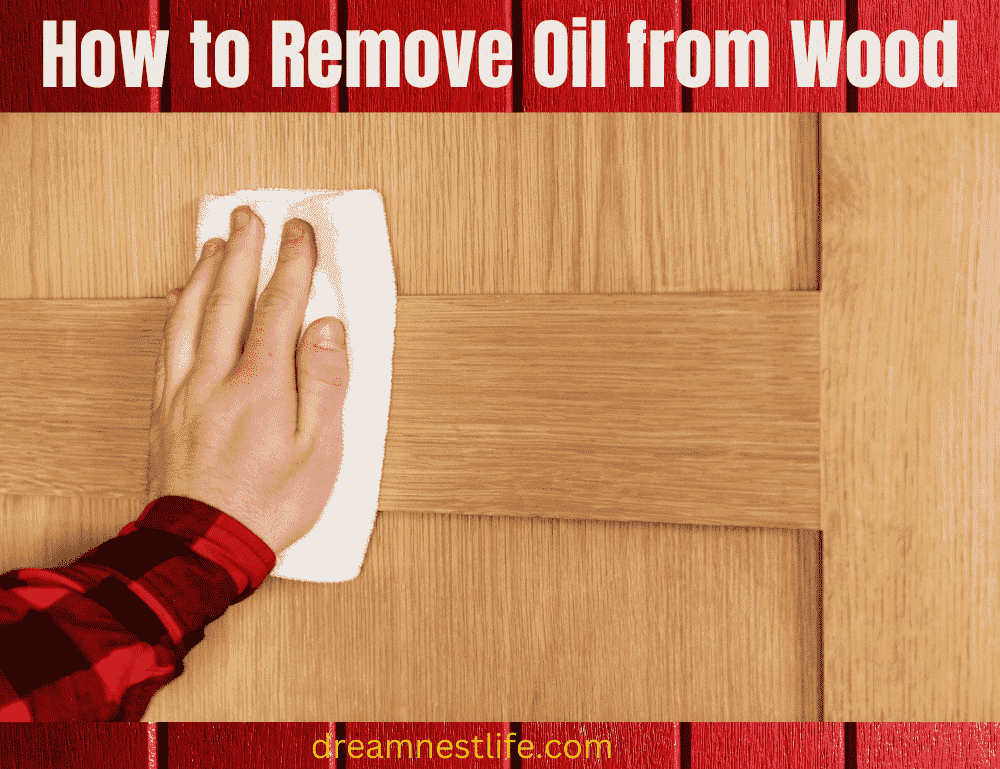To remove oil from wood, sprinkle baking soda on the affected area, let it sit for a few minutes, then scrub it off with a sponge or cloth. When oil spills or stains wood surfaces, it can be a challenging task to clean it off completely.
However, by following a simple process, you can effectively remove oil from wood without damaging the surface. Whether it’s a kitchen countertop, wooden furniture, or flooring, these steps will help you restore the natural beauty of the wood.
This article will guide you through the process of removing oil from wood, using easily available household items. With a few simple steps, you can get rid of unsightly oil stains and enjoy your clean and pristine wood surfaces once again.
The Common Issue Of Oil Stains On Wood Surfaces
Oil stains on wood are a common issue that many people face. Whether it’s from a cooking mishap or a spilled bottle, these stains can be a real eyesore. Luckily, there are a few simple guidelines you can follow to remove oil from wood surfaces effectively.
Firstly, start by blotting up as much of the oil as possible using a clean cloth or paper towel. Then, sprinkle some baking soda on the stain and let it sit for a few minutes. Gently scrub the area with a soft brush, working in a circular motion.
If the stain persists, mix equal parts vinegar and water and use a clean cloth to dab the solution onto the stain. Finally, wipe the area clean with a damp cloth and allow it to dry completely. By following these guidelines, you can easily remove oil stains from wood and restore its natural beauty.
Listing Tools Needed For Effective Oil Removal
When it comes to removing oil from wood, it is essential to have the right tools to ensure effective results. Here are three guidelines to help you in the process. Firstly, avoid using overused words and phrases that can make your writing sound repetitive and uninteresting.
Secondly, use a variety of phrases at the beginning of paragraphs to keep your readers engaged. By choosing different expressions, you will maintain their interest and make the content more engaging. Lastly, remember to skip the conclusion paragraph as it is not necessary.
Instead, focus on providing valuable information throughout the entire post. By adhering to these guidelines, you will be able to effectively remove oil from wood and provide your readers with a helpful and engaging blog post.
How To Use Sanding As A Method For Oil Stain Removal
Sanding is an effective method to remove oil stains from wood surfaces. By carefully following these guidelines, you can ensure optimal results. Firstly, avoid using commonly overused terms and phrases, which can make your writing sound monotonous and less engaging.
Instead, vary your language and use different expressions at the beginning of each paragraph to captivate the reader’s attention. Secondly, focus on the task at hand and explore various approaches to maintaining a reader-friendly tone throughout your content. Lastly, forgo a conclusion paragraph, as it is unnecessary in this case.
By adhering to these principles and considering the specific requirements of oil stain removal, you can employ sanding as an effective technique to remove oil from wood and restore its natural beauty.
Tips For Preventing Future Oil Stains On Wood
To prevent future oil stains on wood, it’s important to adopt a few preventive measures. Firstly, refrain from using commonly overused words and phrases that tend to weaken the impact of your sentences. Instead, aim for descriptive language that engages readers from the start.
Varying the phrases at the beginning of paragraphs also ensures you maintain their interest throughout the text. Avoid repetitive terms and opt for different expressions to keep the content fresh and engaging. Lastly, there is no need to include a conclusion paragraph as it may feel redundant or repetitive.
By adhering to these guidelines, you can effectively prevent future oil stains on wood and enhance the overall readability of your content.
Frequently Asked Questions For How To Remove Oil From Wood
How Do You Remove Oil From Wood?
To remove oil from wood, start by blotting up any excess oil with a clean cloth. Then, sprinkle a generous amount of baking soda on the affected area and let it sit for a few hours. After that, scrub the area with a soft brush and wipe away the baking soda residue.
Can You Use Vinegar To Remove Oil Stains From Wood?
Yes, you can use vinegar to remove oil stains from wood. Mix equal parts vinegar and water, then dip a clean cloth into the solution and gently rub the stain. Repeat as necessary until the oil stain is no longer visible.
Finally, wipe the area with a damp cloth to remove any remaining vinegar residue.
How Do You Remove Stubborn Oil Stains From Wood?
To remove stubborn oil stains from wood, make a paste using equal parts baking soda and water. Apply the paste to the stain and let it sit for a few hours. Then, scrub the area with a soft brush and wipe away the paste.
Repeat if necessary. For deep stains, sanding the wood may be necessary.
Conclusion
Overall, removing oil from wood is a delicate process that requires knowledge and the right techniques. By using simple household materials like baking soda, vinegar, or dish soap, you can effectively tackle oil stains on your wooden surfaces. Regular maintenance and prompt action are key to keeping your wood looking its best.
Remember to always test the solution on a small, inconspicuous area before applying it to the whole surface. With these tips and tricks, you’ll be able to restore your wood to its original beauty in no time.

